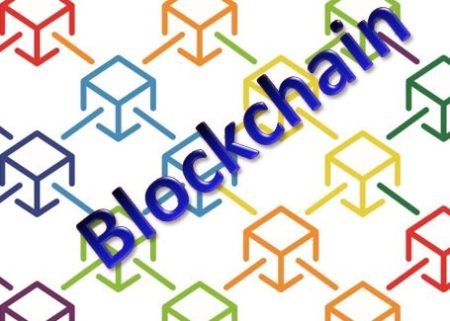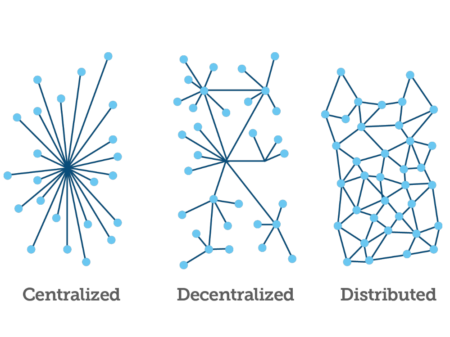Tracking and tracing foods- the role of blockchain
 Part 2- Blockchain as a solution to traceability
Part 2- Blockchain as a solution to traceability
Why Blockchain?
In our previous blog we defined blockchain as a decentralized, distributed ledger technology, among many thousands of computers that can record transactions between parties in a secure and permanent way. It is often associated with cryptocurrency.
The blockchain is an emerging technology that offers a way for companies to perform transactions with each other securely as they move products around the world. What makes blockchain unique is that it is a shared, permanent ledger that records all the transactions in a chronological order that cannot be altered or deleted. The food supply chain consists of millions of transactions. The transactions need verification that no one has tampered with the data.

One of the first experiment with blockchain and food safety was initiated by Walmart and a number of other food giants (Unilever, Dole, Nestlé, Kroger, McCormick and Company, McLane Company, Driscoll’s, Tyson Foods, and Golden State Foods )that teamed up with IBM to investigate how to utilize blockchain to improve the traceability of food. They used blockchain to trace mangoes from Mexico by tagging pallets of mangoes and tracing them through the food chain. While manual tracing took almost a week, the software took 2.2 seconds to show the results. Due to the success of these experiments, Walmart is now reaching out to other suppliers and retailers to join their trials.
In the event of a recall, the blockchain technology can provide real-time notifications to everyone throughout the supply chain, effectively reducing the product withdrawal time from weeks to days, even hours. Additionally, blockchain can allow the identification of places along the supply chain where efficiencies can be improved.
A year ago, GS1 announced a collaboration with IBM and Microsoft to leverage their industry standards within future enterprise blockchain applications for their supply chain clients.
There is extensive coverage of blockchain, as it relates to food traceability, by the news. Most of this coverage over hypes blockchain and present it as a simple “light-switch” solution. Just turn the switch on and get the desired results. However, blockchain is a much more complicated and has numerous hurdles to overcome, before becoming a reality in food tracing. It heavily relies on the quality of the traceability data. To get appropriate traceability, it requires having all parties aligned with each other, using the same data standards.
While blockchain holds promise in raising transparency and improving operational efficiencies in the food industry, there are more trials and validation that need to be carried out in real-world application. The first step is building the foundation of traceability that uses a common language industry-wide.

Current Status of Blockchain
Blockchain is a technology in its infancy. Worldwide there are numerous proof of concepts, and more are being added. However, most are not public Blockchains where all of the information is open and transparent, but rather permission-based blockchains. All are very simple and small-scale experiments. There must be an acknowledgment of the extensive efforts required for data gathering and data quality, and a traceability program is a key for any blockchain solution to be successful. Blockchain is not yet a proven solution in the food industry and its main challenge is scaling up beyond the current small-scale experiments.
Impediments to blockchain adaptation
Blockchain like many emerging technologies creates numerous challenges that have to be resolved before it can achieve mainstream adoption and becomes successful.
Scale-up
Moving from the current status of blockchain that provides concepts and piloting applications to actually deploying productive solutions at the scale required for the food industry, will require further technology development, organizational transformation, and collaboration between all stakeholders. Some blockchain applications have been known to scale poorly.
The blockchain technology could aid in finding the status of a product along the chain. However, it will become more challenging to manage the blockchain as the size of the ledger gets larger.
Some blockchain promoters believe that all the information can be stored on a single chain, similar to Bitcoin, creating a massive unified public record. However, most companies don’t believe in this vision and think that in the foreseeable future permission-based blockchains will prevail.
Tracking the composition of foods that contain 5 or more ingredients is a complex undertaking, acknowledges Frank Yiannas, Walmart’s vice president of food safety. Most food products contain many ingredients. Therefore, the technology might be only appropriate for simple products such as fruit, raw fish, and meat.

Unified Standards
The development of standards for data formatting, using the same protocols is a prerequisite to the blockchain adaptation. If companies try to create blockchain solutions in isolation the industry will end up with blockchains that do not talk to each other thereby defeating the purpose of the blockchain technology.
For a true trace back, all suppliers need to participate. It is admirable that Walmart had invited some major food companies to participate in their pilot trial of the blockchain. However, much larger participation is required to make it a standard. The traceability efforts by FoodLogiQ created FoodLogiQ Connect, a cloud-based supplier transparency, and traceability. FoodLogiQ claims to have captured and tracked more than 10 million traceability events using the state-of-the-art technology platform.
FoodLogiQ is currently working with several industry associations and experts such as the Produce Marketing Association (PMA) and GS1. The purpose is to help define the data standards and requirements that would go into a Blockchain solution.
However, the food industry needs to do more to achieve 100% participation in identical traceability. There is also the question of what impact will it have on the role of the regulatory bodies?
Participation in multiple blockchains
Probably there will not be just a single blockchain-based system in the food industry; instead, there will likely be various private permission-based blockchains due to the competitive nature of the business. Suppliers will have to participate in numerous blockchain networks.
It is imperative that the multiple private blockchains will be capable of inter-connectivity since a single supplier can supply hundreds, if not thousands of different food companies. It is not practical to add the product data into multiple blockchains.
Energy consumption
The blockchain is not a green technology. The electricity required for one bitcoin trade could power a house for a month. The process of writing new blocks consumes a lot of energy.
Forbes magazine claims that proof of work (POW) is costly and time-consuming to produce but easy for others to verify. The Bitcoin POW mechanism is so expensive that it consumes the same amount of electricity it takes to power a country like Switzerland. Can it ever be successful?

Confidentiality and security
Public blockchain systems raise significant concerns regarding data confidentiality. Additionally, it requires honesty by all participants.
“Are those parties are really who they say they are, or where they say they are, or what they are—it doesn’t do that, and that’s really the flaw with it,” Mitchell Weinberg, who founded the food fraud detection and prevention firm Inscatech says. “There’s just no validation of the information that’s being put in. It’s only as good as the person who’s entering the information.” “The people who are adulterating the food and doing stuff to it, they’re very sophisticated in terms of concealing their crime,” he says. “Blockchain’s not going to tell you how that food’s being harvested in the field and what’s going into it and whether the people collecting it or consolidating it are adding anything to it.”
Summary
Blockchain is an interesting new technology that has the potential to revolutionize the food safety. It can solve critical issues affecting food safety such as tracing foods in case of a recall. However, it still has many barriers to overcome before it can gain extensive adaptation in food safety. Its current status is such that it can be used to trace a single product along the chain, but it becomes much more challenging for foods that are composed of multiple ingredients. It would be a mistake rushing into blockchain technology without a thorough understanding of how it is likely to be used and what it could accomplish.
